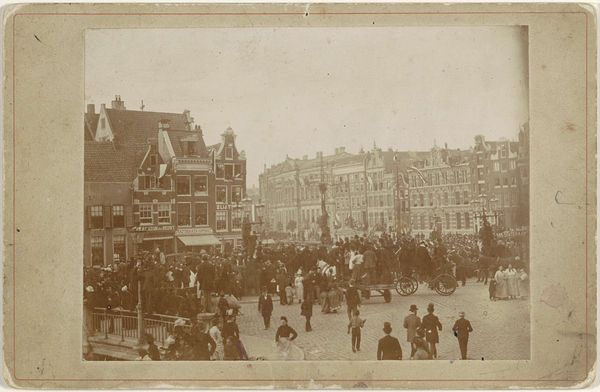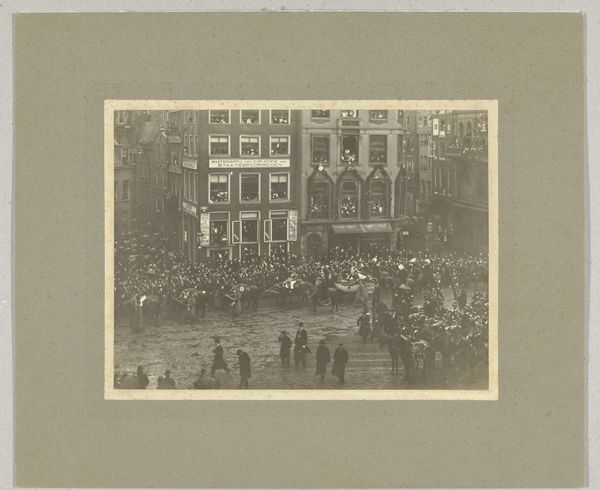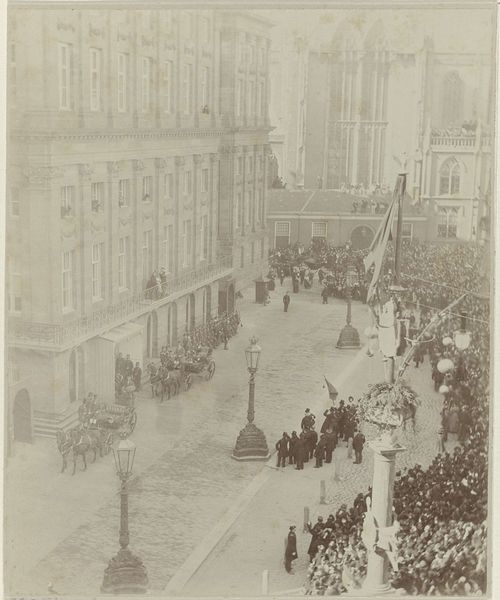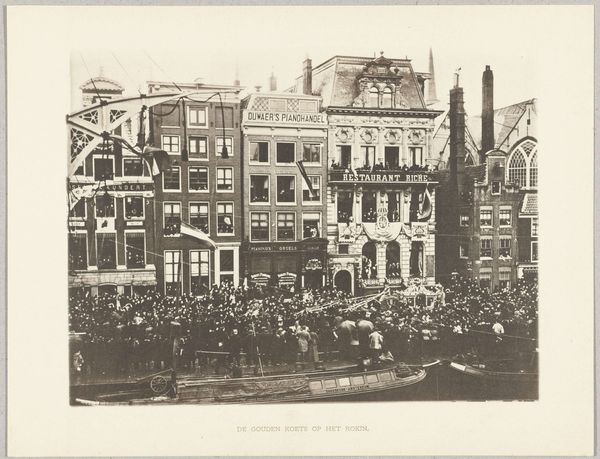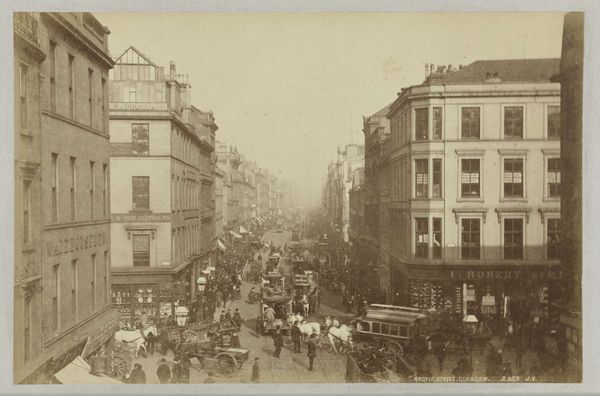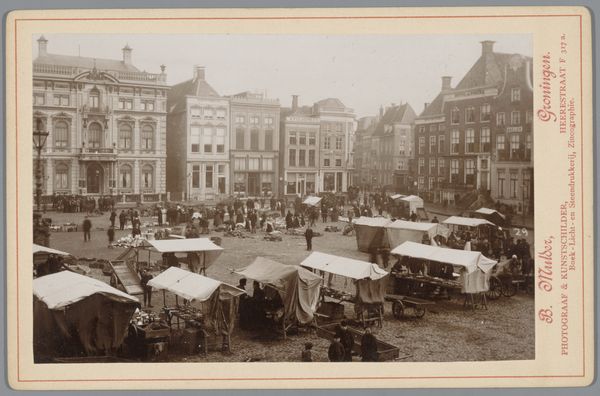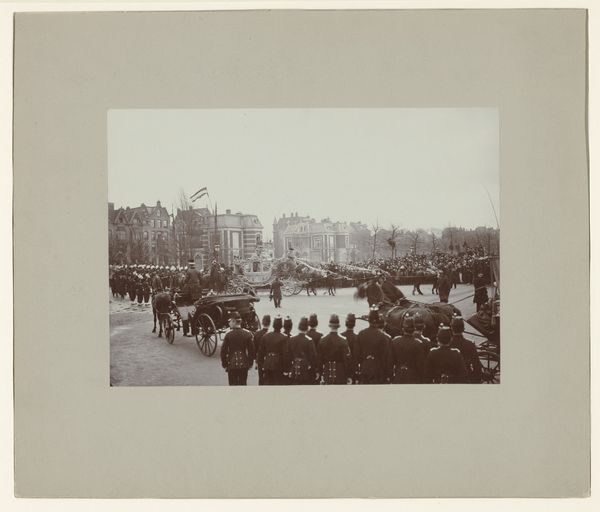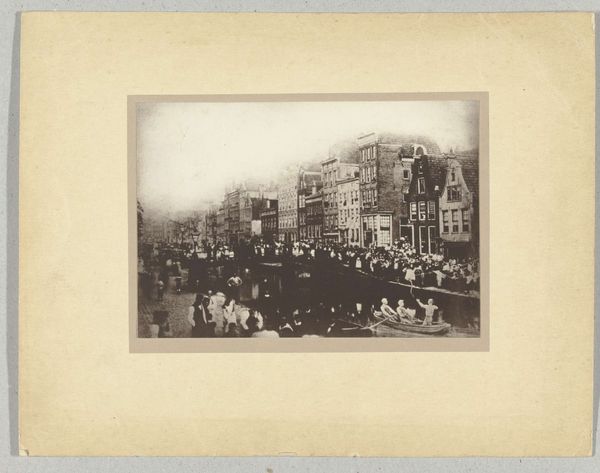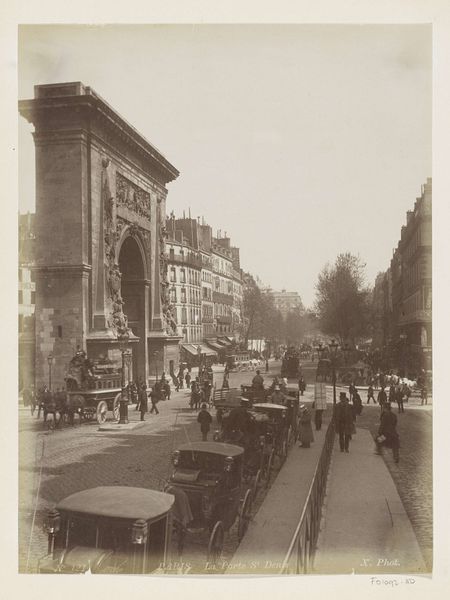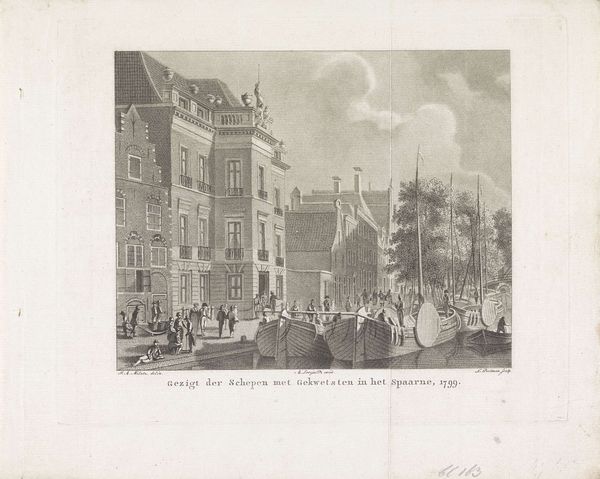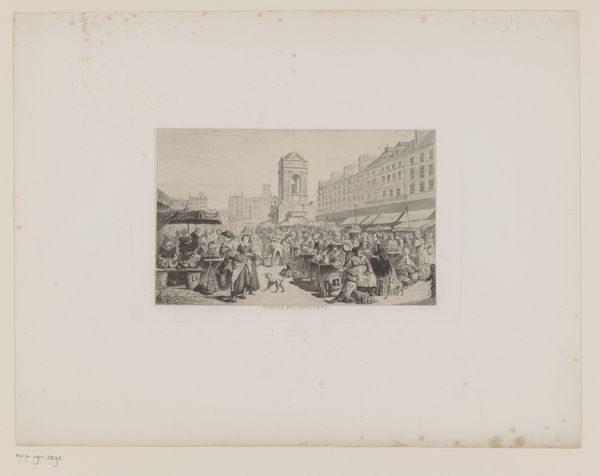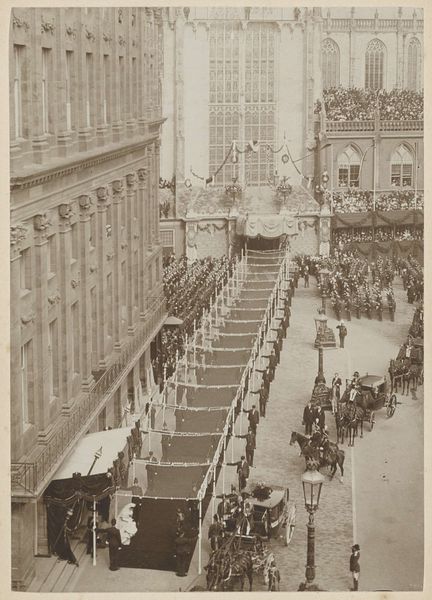
Rijtoer door de stad Amsterdam van het koninklijk paar, 5 maart 1901, feestelijkheden ter gelegenheid van het huwelijk van koningin Wilhelmina en prins Hendrik 1901
0:00
0:00
photography, gelatin-silver-print
#
portrait
#
white palette
#
photography
#
group-portraits
#
gelatin-silver-print
#
cityscape
Dimensions: height 228 mm, width 170 mm, height 297 mm, width 228 mm
Copyright: Rijks Museum: Open Domain
Curator: This gelatin silver print by Barend Groote captures a remarkable moment: the royal couple's procession through Amsterdam on March 5, 1901, celebrating the wedding of Queen Wilhelmina and Prince Hendrik. It’s a dense scene. Editor: Overwhelmingly dense! The greyscale flattens the perspective; it feels like a sea of faces, only broken by the architecture and carriages, creating a study of urban jubilation in turn-of-the-century Amsterdam. Curator: Absolutely. The composition, combined with the photographic technique of the time, also speaks to the cultural significance of royal spectacle. Notice the rigid formality, with onlookers arranged neatly on the sides of the street. It reflects a carefully orchestrated performance of national unity. What can we unpack about the political meaning of such curated visibility, such representation of royal access and, therefore, a perceived proximity and connection to the citizens? Editor: The image processing plays its part, too. As a gelatin silver print, the image undergoes a complex chemical transformation, a sort of alchemy that memorializes this event, solidifying a collective experience, turning it into something almost sacred and enduring beyond the fleeting celebration itself. Also note the variety of carriages: we see a distinct hierarchy and material culture on display! The details—the wheels, harnesses, upholstery—all speak to the labor and resources invested. Curator: Exactly. And who are these laboring people, quite literally 'bearing' the weight of monarchy? One question I’m keen on exploring is whether this public outpouring truly reflected unified support, or if, rather, it glossed over complex social dynamics of class, dissent, and the exclusion of certain groups. For whom was this event, and, subsequently, this image 'made'? Editor: We cannot overlook the social context of labor involved, whether that be those creating carriages or producing the photographs, either, with the print offering its own kind of value within that marketplace of visual culture. By examining those underpinnings of creation, from production to consumption, can give critical clues as to who possessed the ability to both produce, access, and be recognized within visual records like these, and why. Curator: These historical echoes are so loud; such images served a purpose beyond just documenting the event. Thanks for pointing out all these critical access and labor considerations. Editor: Always, a fascinating piece—it provides such insight into the material conditions and societal hierarchies present during that time.
Comments
No comments
Be the first to comment and join the conversation on the ultimate creative platform.
